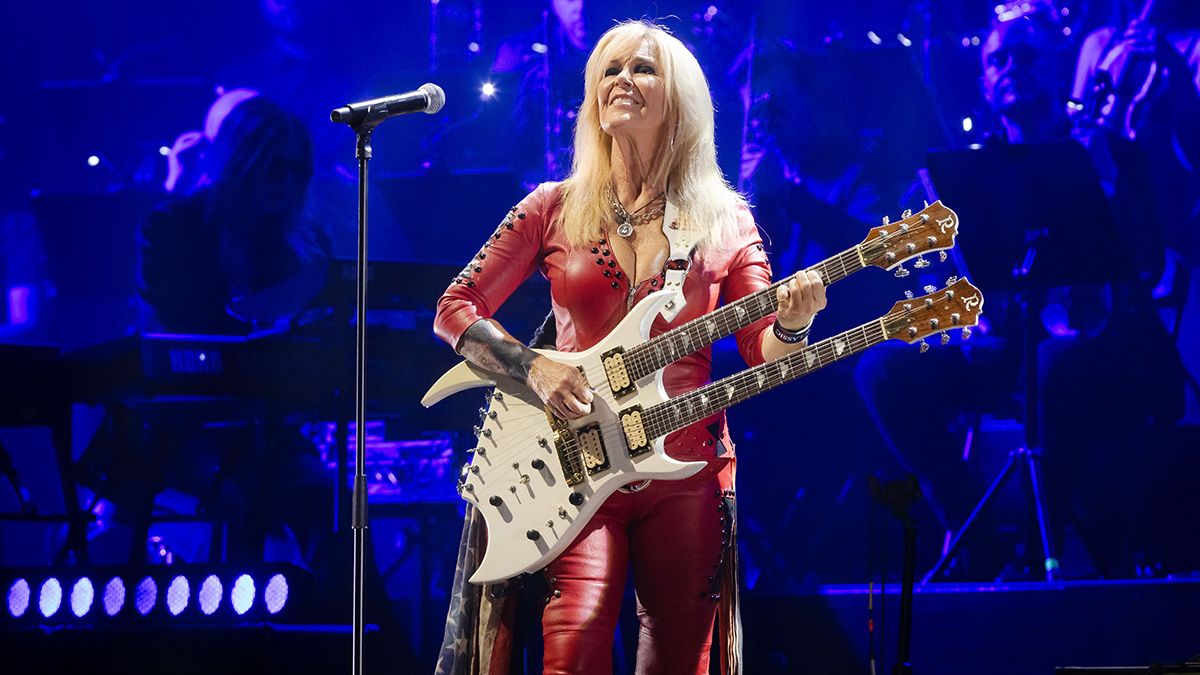How to play blues like the early electric guitar masters
This lesson takes electric blues back to the start, when electricity found its way to the guitar and players such as John Lee Hooker and Hubert Sumlin changed the world

When the guitar ‘went electric’, its potential as a solo or featured instrument – especially in a band context – blew wide open. A new breed of players, including John Lee Hooker, Hubert Sumlin and Sister Rosetta Tharpe, began to exploit these different possibilities and sounds, which were later built upon further by Chuck Berry, Buddy Guy and Jimi Hendrix.
What I’m hoping to capture in these examples is a snapshot in time, when people first began to turn up their amps and discover just how raucous things could get!
As you’ll see, I’m relying more on strident ringing open strings rather than single-note ‘solos’ per se, but the electric guitar is very much front and centre. With a little ingenuity, it would be possible to incorporate bass notes and make these ideas stand without a backing track (see Example 1 for some hints on this), though that would arguably be harking back to the previous era as opposed to striding boldly ahead…
Going forwards, if we draw a rough timeline from tracks such as Howlin’ Wolf’s Smokestack Lightnin’ (featuring Hubert Sumlin) to Jimi’s Voodoo Chile and SRV’s Scuttle Buttin’, you’ll see how established this approach has become through the decades.
Rather than play a full solo, I’ve opted for four examples that could nevertheless be assembled to make a complete piece, with Example 4 giving an alternative take over the last four bars.
I’ve chosen to use a pick for a strong attack, pushing the studio Vox AC15 into a bit of natural overdrive. However, using hybrid picking could also produce some expressive, albeit slightly softer-edged, results.
Ultimately, from the standpoint of the present day, you can treat these ideas as ‘vocabulary’ and apply them to a wide variety of musical situations – the only limit, as they say, is your imagination.
All the latest guitar news, interviews, lessons, reviews, deals and more, direct to your inbox!
Hope you enjoy exploring these ideas and see you next time!
Example 1
Unlike the later examples, this phrase could be played unaccompanied, courtesy of the support provided by those ringing bass notes.
Sliding between positions 1 and 2 of the E minor pentatonic, I’m heavily featuring the open first and second strings – another way to fill out the sound for a solo guitar arrangement.
There is also a hint of Chuck Berry/50s rock ’n’ roll in bar 3 with that doublestop, which also features the 6th (C#).
Example 2
Moving to the IV chord (A), I’m using a voicing of A7, which is very popular in this style and means I can start the phrase strongly with an open fifth string as my root.
As we’ll see a bit later, this shape is movable if you have a bass player to fill out the low-end – and even if you don’t, there are positions where this can be worked around. I’m finishing up with a few more vocabulary ideas from the open-position E minor pentatonic.
Example 3
Straying further up the fretboard into ‘lead’ guitar territory, I feel this phrase demonstrates a platform on which many later styles have been built. You’ll hear some characteristic quarter-tone bends (especially on the minor 3rd/G) and the characteristic 6th (C#) crops up, too.
For the end of the phrase, I’m playing a run down on the third string, alternating with the open first and second to fill out the sound and push the guitar up front.
Example 4
An alternative take on the final phrase, I’ve opted to use the same ‘7th’ voicing as Example 2, starting on B7 (the V chord) then shifting down two frets back to A (IV).
The final phrase is inspired by a mixture of SRV and Sister Rosetta Tharpe, featuring some rapid chromatic hammer-ons (you could try sliding this, too) between shapes 1 and 2 of the E minor pentatonic, ending as we began on the open sixth string.
Hear it here
Howlin’ Wolf – The Definitive Collection
Right from the very first track, Moanin’ At Midnight, you can hear Hubert Sumlin’s edgy, slightly driven guitar using the kind of phrasing I’ve highlighted. Smokestack Lightnin’ almost doesn’t need discussing as it’s such a classic – but it’s always worth another listen.
Spoonful demonstrates the guitar making a leap from chord-based licks and fills to outright solos. It’s easy to see why Hubert Sumlin was such a great influence on the young Jimmy Page and Jeff Beck.
John Lee Hooker – King Of The Boogie
Another compilation, but this one gives a great overview of the development of John Lee Hooker’s style, and of blues guitar playing in general. Sally Mae, backed with acoustic guitar (in what sounds like open G or A tuning with a capo), establishes a base line, developed further on Stuttering Blues, which steps squarely into the territory we’ve covered here.
Finally, who could forget about Boom Boom?. Very similar to Smokestack Lightnin’ but in a more up-tempo context.
Sister Rosetta Tharpe – Gospel Train
Though Sister Rosetta Tharpe was known primarily as a singer – and a formidable one at that – this album, released in 1956, contains many of what were the very latest styles and techniques.
Check out her biting tone and harmonically savvy soloing on Beams Of Heaven, Cain’t No Grave Hold My Body Down, and 99½ Won’t Do. There is also some wonderful footage of her performing in the UK in the early 60s, which is worth searching for online.
As well as a longtime contributor to Guitarist and Guitar Techniques, Richard is Tony Hadley’s longstanding guitarist, and has worked with everyone from Roger Daltrey to Ronan Keating.





